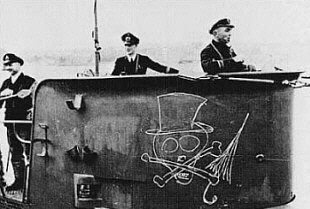
This little piggy first made an appearance on the SF3D era Raccoon decal sheets/camo cards as the insignia for the 30th SAFS Company. It later resurfaced as a graphic on the packaging of the Ma.K generation re-release of the same kit (quite apt as the profile of the Raccoon looks conspicuously porcine). In 2001 the pig was included on the decal sheet of the Modelkasten Snake Eye as the emblem of the 51st Combat Recce Company, 2nd Platoon. More recently the marking has made it's way on to the new Wave Snake Eye decals ...

The 'Jolanthe Kette', or 'Jolanthe Squadron', was the nickname given to the first three Stukas sent to Spain as part of Germany's secret military involvement in the Spanish Civil War. The three Stukas became known as the 'Jolanthe Squadron' most likely because the Ju 87's ungainly appearance as it taxied over rough air strips was reminiscent of the central character of a popular german cartoon film 'Trouble with Jolanthe' ...
"... they were officially incorporated into the Legion as the fighter wing's fifth staffel (5.J/88), but became universally known as the 'Jolanthe' Kette after their unit badge. This depicted a large pink sow, and could trace it's origins back to Barth, where the Gruppenkomandeur of IV.(St)/LG 1, Oberstleutnant Gunther Schwartzkopff (one of the few supporters of the Stuka concept) had nicknamed the Ju 87 after the eponymous heroine of a favorite film comedy of the day that centered around a pig 'Krach um Jolanthe' ('Trouble with Jolanthe')!"



"The popular German stage play Krach um Jolanthe was brought to the screen by producer-director Carl Froelich in 1935. Jolanthe is the name of a prize sow, the pride of a tiny rural community. Trouble begins when the sheriff comes calling, demanding to collect an exorbitant tax on the blue-ribbon oinker. When the owner can't pay up, the sheriff holds an auction to sell the sow to the highest bidder. The loyal townsfolk boycott the event, then plot a "jailbreak" when the sow is placed in custody of the local constabulary. Subtlety is hardly the strong suit of Krach um Jolanthe; the audience is invited to park its dignity at the door and laugh out loud unashamedly." ~ Hal Erickson, All Movie Guide











































